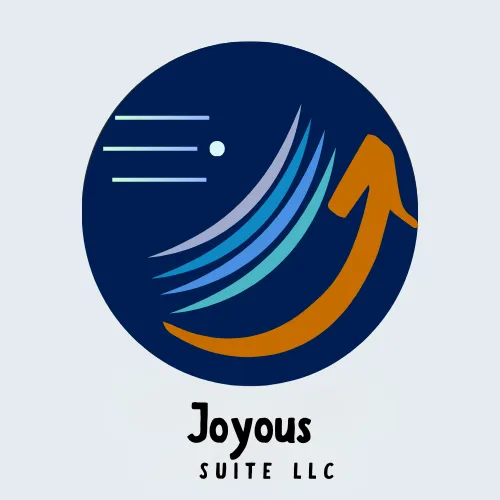
Beyond Profit & Loss
Beyond Profit & Loss: Teaching Clients to Read Their Cash Flow Story

We're profitable, so why can't I pay my bills?" This question haunts business owners across every industry, revealing one of the most dangerous misconceptions in business: that profit equals cash. After four decades of helping businesses navigate financial challenges, I've learned that the most successful entrepreneurs aren't necessarily those who generate the
Figure 1. Created by Joy Francis using ChatGPT, the highest profits are achieved by those who understand their cash flow story and can read the financial narrative that determines their business survival.
The disconnect between profit and cash flow destroyed more businesses during the 2008 recession than any other single factor. Companies with impressive profit margins found themselves unable to meet payroll or pay suppliers because they didn't understand the difference between accounting profit and actual cash generation. This knowledge gap isn't just an academic concern—it's a business survival issue that every CPA must help their clients master.
The Great Profit Illusion

Traditional accounting education teaches us to focus on the profit and loss statement as the primary measure of business success. Revenue minus expenses equals profit—it seems straightforward. But this approach creates a dangerous illusion because it ignores the timing differences between when transactions are recorded and when cash actually changes hands.
When I was working as a bookkeeper for that small electronics shop, I thought our job was complete when
the P&L showed a profit. I didn't understand that the Figure 2. Created by Joy Francis using ChatGPT
business could be profitable on paper while simultaneously running out of cash to operate. This misconception nearly cost me dearly when I started my own consulting practice and had to learn cash flow management through trial and error.
During my time at the real estate conglomerate, I witnessed this profit illusion firsthand. Our mortgage company showed consistent profitability on the income statement, but we were actually $5 million underwater in cash flow. The problem wasn't visible in the monthly P&L because the cash flow issues were buried in the timing differences between loan originations, sales, and cash collections.
According to the National Federation of Independent Business, 64% of small business owners cannot accurately explain the difference between profit and cash flow, yet 82% of business failures are attributed to cash flow problems (National Federation of Independent Business, "Small Business Financial Literacy Study," 2023).
The Three Financial Stories Every Business Tells

Every business tells three distinct financial stories through its financial statements, and each story reveals different aspects of business performance:
The Profitability Story (P&L Statement): How efficiently does the business convert resources into profit?
The Financial Position Story (Balance Sheet): What does the business own, owe,
Figure 3. created by Joy Francis using ChatGPT.
and what's left for owners?
The Cash Flow Story (Cash Flow Statement): How does cash actually move through the business?
Most business owners only understand the first story, but the cash flow story is often the most critical for business survival and growth.
Understanding the Cash Flow Statement Architecture
The cash flow statement is divided into three sections, each telling a different part of the cash story:
Operating Activities: Cash generated or used by core business operations
Investing Activities: Cash used for or generated from investments in assets
Financing Activities: Cash from or used for financing the business
When I was teaching financial classes at Ford Motor Company, I learned that even sophisticated employees struggled to understand how these three sections connected to tell the complete cash flow story. The key insight is that each section reveals different management decisions and their cash flow consequences.
Operating Cash Flow: The Heart of the Story

Operating cash flow reveals how effectively a business converts its profit into actual cash. This is where the rubber meets the road—where accounting profit either translates into spendable cash or gets trapped in working capital.
During my work with the family insurance agency, I helped them
understand why their operating cash flow was consistently lower than their reported profit. The issue wasn't poor performance—it was growth. As their business expanded, they had to invest more cash in accounts receivable and inventory, which reduced their operating cash flow despite increasing profits.
The key operating cash flow metrics every business owner should understand:
Cash Conversion Cycle: How long it takes to convert investments back into cash
Working Capital Changes: How growth affects cash requirements
Quality of Earnings: How much of reported profit actually becomes cash.
The Working Capital Trap

Working capital—the difference between current assets and current liabilities—is where many profitable businesses get trapped. As businesses grow, they typically need more cash tied up in accounts receivable, inventory, and other current assets. This growth can reduce cash flow even when profits are increasing.
I experienced this trap personally when building my consulting practice. As I gained more clients, I had
more accounts receivable outstanding, which meant less cash available for operations despite higher profits. Understanding this dynamic helped me implement better cash management practices and avoid the working capital trap.
Research from the Cash Flow Management Institute shows that businesses with working capital management training have 43% better cash flow predictability and 28% fewer cash flow crises (Cash Flow Management Institute, "Working Capital Impact Study," 2023).
Teaching Clients to Read Cash Flow Patterns

Effective cash flow education requires helping clients recognize patterns and understand what they mean:
Seasonal Patterns: How business cycles affect cash flow timing
Growth Patterns: How expansion impacts cash requirements
Collection Pattns: How customer payment behavior affects cash flow
Investment Patterns: How capital expenditures impact cash availability
When I was managing the construction portion of our real estate operations during the 1980 recession, I had to become expert at reading cash flow patterns. Construction has unique cash flow challenges—you often pay for materials and labor before receiving payment from customers. Understanding these patterns was crucial for survival during high-interest periods.
The Cash Flow Forecasting Framework

Teaching clients to forecast cash flow requires a systematic approach:
Step 1: Historical Analysis
Review 12-24 months of historical cash flow to identify patterns and trends.
Step 2: Operating Cash Flow Projection
Project cash receipts and disbursements based on sales forecasts and payment patterns.
Step 3: Investment Cash Flow Planning
Plan for capital expenditures and asset purchases.
Step 4: Financing Cash Flow Management lan for debt service, equity investments, and financing needs.
Step 5: Scenario Analysis
Test projections under different scenarios to identify risks and opportunities.
Test projections under different scenarios to identify risks and opportunities.
The Personal Cash Flow Lesson
My most powerful cash flow education came from personal experience. When I was diagnosed with multiple sclerosis in 2005, I had to quickly adapt my business model while managing the financial implications of a chronic illness. This experience taught me that cash flow management is as much about psychology and behavior as it is about numbers.
I learned to create detailed cash flow projections that accounted for the uncertainty of my condition. Some months I could work at full capacity; others required reduced activity. This variability required sophisticated cash flow planning that most business owners never consider.
The discipline I developed for personal cash flow management—creating multiple scenarios, building cash reserves, and monitoring leading indicators—became the foundation for the cash flow education I provide to clients.
Technology Tools for Cash Flow Education
Modern technology provides powerful tools for teaching cash flow concepts:
Visual Cash Flow Dashboards: Real-time displays of cash position and trends
Scenario Modeling Software: Tools for testing different assumptions and outcomes
Automated Forecasting Systems: Software that creates rolling cash flow projections
Mobile Monitoring Apps: Tools for tracking cash flow on the go
When I had to adapt my business model due to MS limitations, I learned to leverage technology for more effective cash flow education. Virtual tools allowed me to teach cash flow concepts more effectively than traditional methods while providing clients with ongoing monitoring capabilities.
Common Cash Flow Misconceptions

Misconception 1: Profit Equals Cash
Many business owners believe that if they're profitable, they automatically have cash. This ignores working capital requirements and timing differences.
Misconception 2: Cash Flow Problems Are Temporary**
Business owners often treat cash flow problems as short-term issues rather than symptoms of underlying business model problems.
Misconception 3: Growth Always Improves Cash Flow**
Rapid growth often worsens cash flow in the short term due to working capital requirements.
Misconception 4: Cash Flow Management Is Just Accounting**
Effective cash flow management requires understanding operations, sales, and strategic planning, not just accounting.
The Behavioral Aspects of Cash Flow
Cash flow management involves significant behavioral challenges:
Optimism Bias: Business owners consistently overestimate future cash receipts and underestimate cash requirements.
Procrastination: Delaying difficult conversations about collections or payment terms.
Lack of Discipline: Failing to maintain cash reserves during good times.
Poor Communication: Not involving the entire team in cash flow management.
During my work with various family businesses, I observed how family dynamics could either help or hurt cash flow management. The most successful families were those who could separate emotional decisions from financial discipline.
Building Cash Flow Literacy
Effective cash flow education requires a systematic approach:
Start with Basics: Ensure clients understand the difference between profit and cash flow.
Use Visual Tools: Charts and graphs make cash flow concepts more accessible.
Provide Regular Training: Cash flow education should be ongoing, not a one-time event.
Create Accountability: Establish systems for regular cash flow review and discussion.
Connect to Strategy: Help clients understand how cash flow connects to their business goals.
The Cash Flow Communication Framework
Teaching cash flow requires effective communication strategies:
Use Stories: Real examples make abstract concepts concrete.
Avoid Jargon: Explain concepts in plain language that business owners understand.
Focus on Decisions: Connect cash flow information to specific business decisions.
Provide Context: Help clients understand what their cash flow numbers mean relative to their industry and goals.
Create Action Plans: Turn cash flow insights into specific improvement strategies.
Industry-Specific Cash Flow Education
Different industries require customized cash flow education:
Retail: Seasonal inventory cycles and holiday sales concentration
Manufacturing: Production cycles and raw material price volatility
Professional Services: Project billing and client concentration risks
Construction: Progress billing and material cost escalation
My experience across multiple industries taught me that while cash flow principles are u niversal, their application must be customized for each industry's unique characteristics.
The Profit First Connection

My certification as a Profit First Professional reinforced the importance of cash flow education. The Profit First system, developed by Mike Michalowicz, provides a behavioral approach to cash flow management that addresses the psychological challenges of financial discipline.
The system allocates cash into different accounts based on predetermined percentages, ensuring that profit and cash reserves are prioritized before expenses. This approach helps business owners understand the relationship between profit allocation and cash flow management.
Measuring Cash Flow Education Success
Effective cash flow education should result in measurable improvements:
Improved Forecasting Accuracy: Clients should be able to predict cash flow with increasing precision.
Better Decision Making: Business decisions should reflect cash flow considerations.
Reduced Cash Flow Crises: Fewer emergency situations requiring immediate cash flow intervention.
Increased Cash Reserves: Clients should build and maintain appropriate cash reserves.
Enhanced Communication: Teams should discuss cash flow regularly and effectively.
Your Cash Flow Education Mission
Every CPA has the opportunity to transform their clients' financial literacy by teaching them to read their cash flow story. This education isn't just about preventing problems—it's about enabling better business decisions and sustainable growth.
Remember what my mother always told me: "You can do anything if you set your mind to it." If a legally blind woman could learn to read complex cash flow patterns well enough to manage multimillion-dollar investments during economic crisis, your clients can certainly learn to understand their own cash flow stories.
The question isn't whether your clients need cash flow education—they do. The question is whether you're prepared to provide it in a way that transforms their business understanding and decision-making.
Your clients' cash flow stories are waiting to be read. Are you ready to teach them how?
Get your complimentary copy of “The Cash Flow Crisis Playbook”—the exact 13-week forecasting framework and step-by-step action plans I use to transform panicked client calls into $5,000/month virtual CFO retainers.
Joy's journey from bookkeeper to CFO of a public company taught her that success isn't about being the smartest person in the room—it's about asking the right questions and having the courage to act on the answers. She now helps CPAs transform their practices by shifting from compliance to strategy.
Works Cited
Cash Flow Management Institute. "Working Capital Impact Study." CFMI, 2023.
National Federation of Independent Business. "Small Business Financial Literacy Study." NFIB, 2023.
I want all the charts to be graphs the five are: 1. "Income," 2. "Profit," 3. "Owner's Comp," 4. "Tax," and 5. "Opex." Please correct


